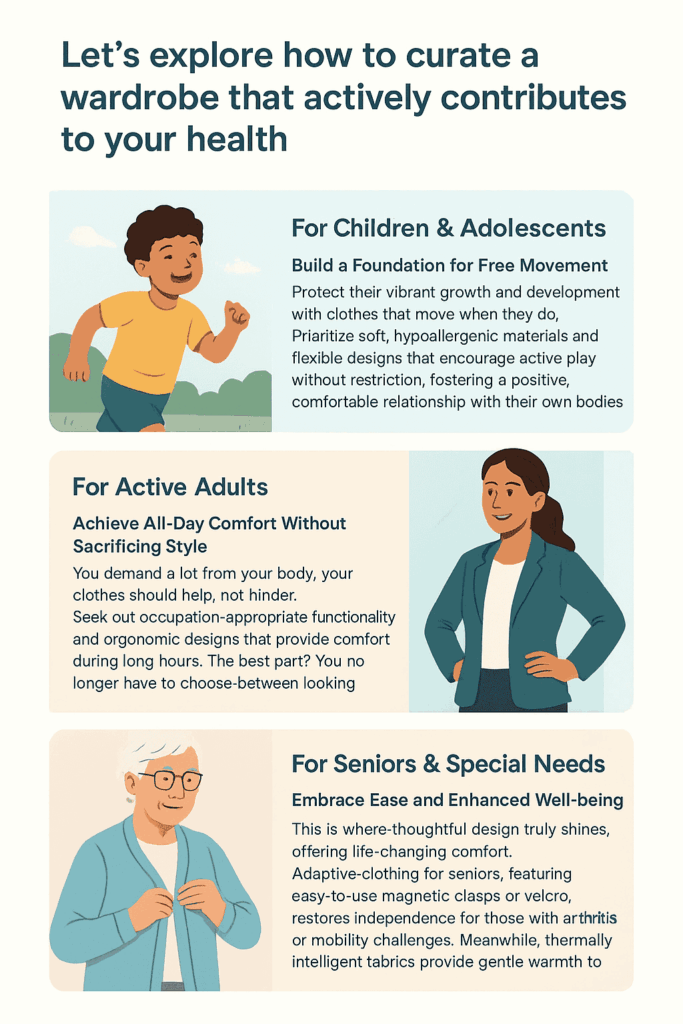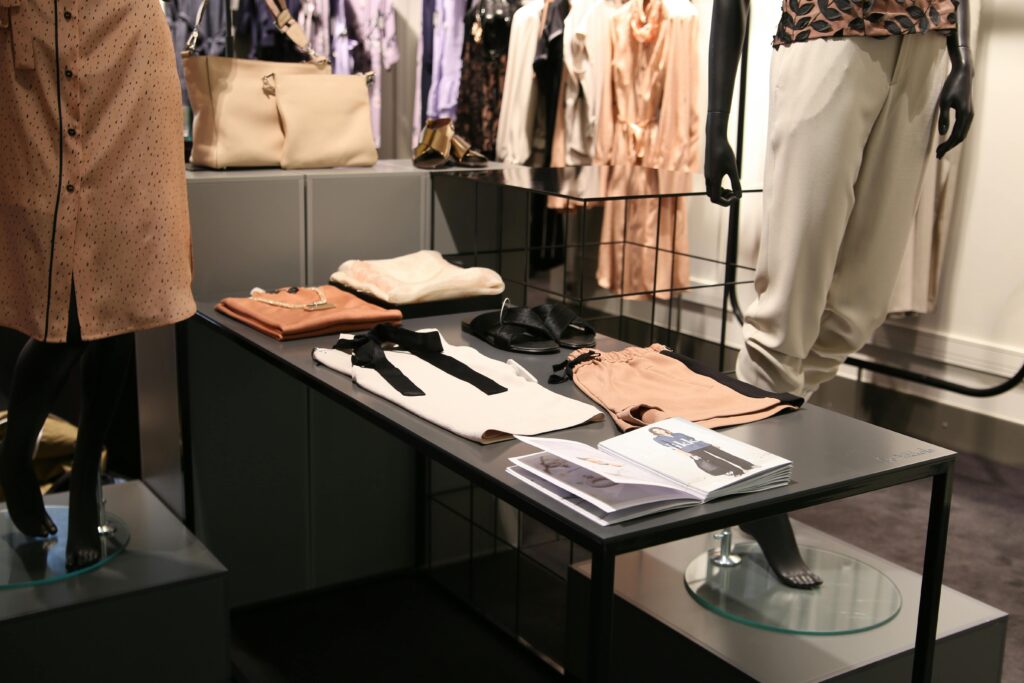The Profound Link Between Clothing and Health: A Guide to Therapeutic Dressing
The intrinsic connection between clothing and health represents one of the most overlooked aspects of daily wellness. While fashion trends dominate clothing conversations, the physiological impact of our wardrobe choices remains profoundly important. This comprehensive guide explores how health-conscious clothing choices can enhance wellbeing, prevent discomfort, and even address specific health concerns through therapeutic dressing principles that harmonize with your body’s natural needs.
Why Your Clothing Choices Matter More Than You Think
The relationship between clothing and health isn’t merely about protection from elements—it’s about creating a symbiotic relationship between your body and what you wear. Historical medical texts and modern research both confirm that inappropriate clothing can contribute to various health issues, while thoughtful healthy wardrobe choices can significantly improve quality of life across all ages and activity levels.
Dress Smarter, Not Harder: A Life-Stage Guide to Functional Fashion
Let’s explore how to curate a wardrobe that actively contributes to your health:
- For Children & Adolescents: Build a Foundation for Free Movement.
Protect their vibrant growth and development with clothes that move when they do. Prioritize soft, hypoallergenic materials and flexible designs that encourage active play without restriction, fostering a positive, comfortable relationship with their own bodies. - For Active Adults: Achieve All-Day Comfort Without Sacrificing Style.
You demand a lot from your body; your clothes should help, not hinder. Seek out occupation-appropriate functionality and ergonomic designs that provide comfort during long hours. The best part? You no longer have to choose between looking professional and feeling good—modern clothing offers both, boosting your confidence and productivity from the inside out. - For Seniors & Special Needs: Embrace Ease and Enhanced Well-being.
This is where thoughtful design truly shines, offering life-changing comfort. Adaptive clothing for seniors, featuring easy-to-use magnetic clasps or velcro, restores independence for those with arthritis or mobility challenges. Meanwhile, thermally intelligent fabrics provide gentle warmth to support circulation, turning getting dressed into a simple, rewarding act of self-care that promotes stability and comfort all day long.

The Real Cost of Fashion Over Function
While style has its place, history is littered with trends that prioritized vanity over vitality—from bone-cinching corsets that restricted breathing to flimsy fabrics in freezing climates. These choices created real health consequences. Today, we know better. The most empowering style choice you can make is to listen to your body’s needs. Choose breathable fabrics suited to your climate, opt for a fit that allows for deep, diaphragmatic breathing, and layer intelligently to support your body’s natural thermostat.
By making mindful choices, you invest in long-term vitality. This proactive approach to clothing and health ensures that what you wear doesn’t just make you look good—it helps you feel incredible, empowering you to live life to the fullest, at every age.
Natural Fabrics and Skin Health: The Foundation of Wellness
Why Natural Fabrics Matter for Skin and Temperature Regulation
The conversation about benefits of natural fabrics goes beyond comfort—it’s fundamentally about physiological compatibility. Natural materials like cotton, wool, linen, and silk possess inherent properties that synthetic fabrics struggle to replicate:
- Breathability that regulates body temperature
- Moisture-wicking capabilities that keep skin dry
- Hypoallergenic properties that reduce irritation
- Biodegradability that supports environmental health
Research indicates that breathable fabrics for skin health can reduce dermatological issues by allowing proper air circulation and preventing moisture buildup. This is particularly important for individuals with sensitive skin or conditions like eczema, where synthetic fabrics often exacerbate irritation.
The Science of Thermal Comfort Clothing
Layering for Thermal Comfort Across Seasons
The ancient practice of layering represents one of the most effective strategies for maintaining optimal body temperature. Modern thermal comfort clothing systems have evolved this concept into a science, with technical fabrics designed to work together in maintaining homeostasis:
- Base layers that manage moisture evaporation
- Insulating mid-layers that trap warmth without bulk
- Weather-resistant outer layers that protect against elements
This systematic approach to layering clothes for climate adaptation allows your body to maintain its natural thermoregulatory processes without overworking, which is particularly valuable for those with circulatory issues or temperature sensitivity.
Mindful Living Meets Mindful Dressing
The philosophy of mindful living clothing habits extends beyond mere aesthetics to encompass how each garment serves your body’s needs. This approach involves:
- Choosing clothes that allow natural movement
- Selecting fabrics appropriate for your activities
- Considering the environmental impact of clothing production
- Being aware of how garments feel throughout the day
This conscious approach to dressing represents a form of self-care that acknowledges the profound connection between physical comfort and mental wellbeing.
How Restrictive Fashion Affects Your Body
The impact of restrictive clothing on health is both immediate and cumulative. From tight waistbands that compromise digestion to constrictive sleeves that limit circulation, many fashion choices directly contradict physiological needs:
- Reduced lung capacity from tight torso garments
- Digestive discomfort from abdominal compression
- Nerve compression from improperly fitted clothing
- Postural imbalances from restrictive movement
Understanding these effects helps explain why ergonomic clothing design principles are increasingly important in modern apparel manufacturing, particularly for those who spend long hours in work attire.

Choosing Footwear That Protects Posture and Circulation
Often overlooked in discussions about clothing and health, footwear fundamentally affects musculoskeletal wellbeing. Proper shoe selection can prevent or alleviate numerous conditions:
- Arch support that maintains natural foot biomechanics
- Adequate toe space that prevents deformities
- Appropriate cushioning that reduces joint impact
- Breathable materials that prevent fungal infections
The search for “shoes that improve posture and circulation” reflects growing awareness that foot health directly influences overall physical wellbeing, from spinal alignment to circulatory efficiency.
Implementing Your Health-Conscious Wardrobe
Transitioning to health-conscious clothing doesn’t require discarding your entire wardrobe. These practical steps can help you develop more therapeutic dressing habits:
- Audit your current wardrobe for restrictive or uncomfortable items
- Prioritize natural fibers for everyday wear
- Invest in quality foundational pieces that support rather than constrain
- Consider your specific health needs when selecting new items
- Learn basic clothing alterations to improve fit of existing garments
For those with specific sensitivities, exploring “best natural fabrics for sensitive skin” can provide targeted solutions for comfort and health.
The Future of Therapeutic Dressing
As awareness grows about the connection between clothing and health, manufacturers are responding with innovations that merge style with substance. From temperature-regulating smart fabrics to truly inclusive sizing and adaptive designs, the future of clothing looks increasingly health-positive.
The principles of therapeutic dressing represent a return to clothing’s original purpose: protecting and enhancing the human experience. By making mindful choices about what we wear, we honor our bodies’ needs while expressing personal style—a harmonious balance that represents true wellness in practice.
Ready to transform your relationship with what you wear? Explore our guide to building a health-conscious wardrobe or discover the science behind thermal comfort to deepen your understanding of how clothing affects your wellbeing.
Pair smart dressing—layering, natural fabrics, and supportive footwear—with everyday prevention habits to keep seasonal infections at bay. Read our practical guide on how to prevent a cold naturally for evidence-based steps you can start today.
.
Frequently Asked Questions (FAQ)
How does clothing directly impact my health?
The connection between clothing and health is primarily physiological. Restrictive garments can impair circulation and digestion, while non-breathable fabrics disrupt thermal regulation and cause skin irritation. Conversely, health-conscious clothing made from natural, breathable materials supports the body’s natural functions, promotes better temperature control, and can significantly enhance overall comfort and wellbeing.
What are the benefits of choosing natural fabrics for my wardrobe?
Natural fabrics like cotton, wool, and linen are central to therapeutic dressing. Their inherent breathability allows for better air circulation, which helps regulate body temperature and wick moisture away from the skin. This reduces the risk of dermatological issues and prevents the discomfort caused by sweat buildup. Making this switch is a fundamental step in building a health-conscious wardrobe that works in harmony with your body.
Can the right clothing choices really help with specific health conditions?
Absolutely. Strategic clothing and health choices can provide tangible benefits for various conditions. For example, those with arthritis can benefit from adaptive clothing with easy fastenings, while individuals with circulation issues can use strategic layering with breathable fabrics to maintain better thermal comfort. This mindful approach to dressing acts as a supportive tool in managing overall health.